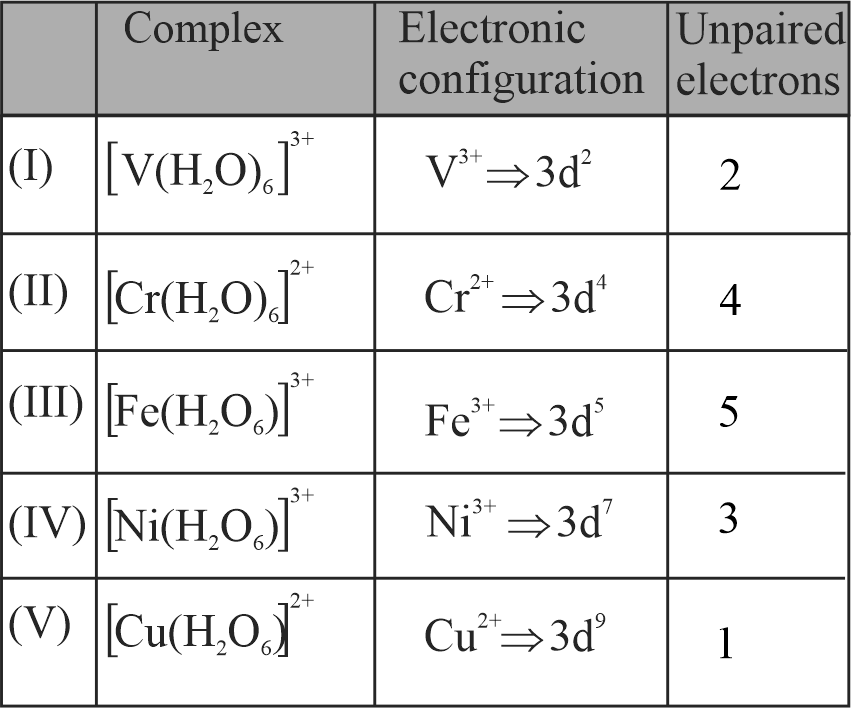322282
The correct statements from following are
(I) The strength of anionic ligands can be explained by crystal field theory.
(II) Valence bond theory does not give a quantitative interpretation of kinetic stability of coordination compounds.
(III) The hybridisation involved in formation of
(IV) The number of possible isomer(s) of
Choose the correct answer from the options given below
322282
The correct statements from following are
(I) The strength of anionic ligands can be explained by crystal field theory.
(II) Valence bond theory does not give a quantitative interpretation of kinetic stability of coordination compounds.
(III) The hybridisation involved in formation of
(IV) The number of possible isomer(s) of
Choose the correct answer from the options given below
322282
The correct statements from following are
(I) The strength of anionic ligands can be explained by crystal field theory.
(II) Valence bond theory does not give a quantitative interpretation of kinetic stability of coordination compounds.
(III) The hybridisation involved in formation of
(IV) The number of possible isomer(s) of
Choose the correct answer from the options given below
322282
The correct statements from following are
(I) The strength of anionic ligands can be explained by crystal field theory.
(II) Valence bond theory does not give a quantitative interpretation of kinetic stability of coordination compounds.
(III) The hybridisation involved in formation of
(IV) The number of possible isomer(s) of
Choose the correct answer from the options given below

